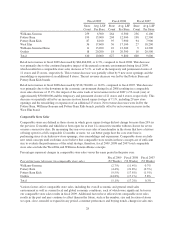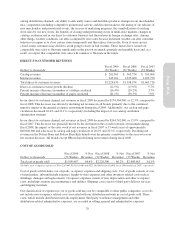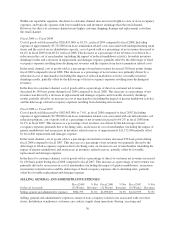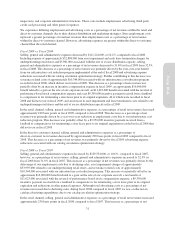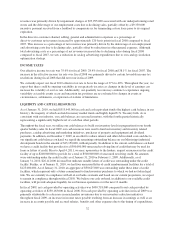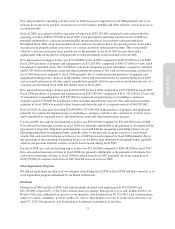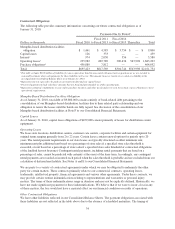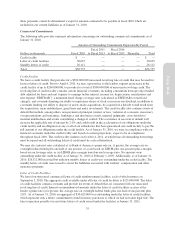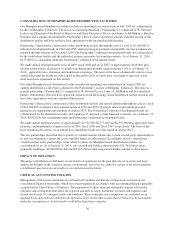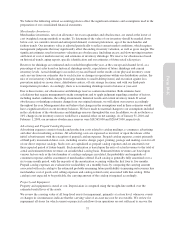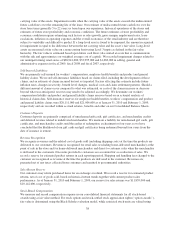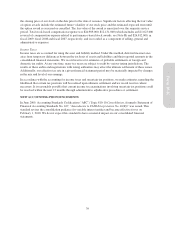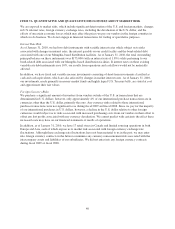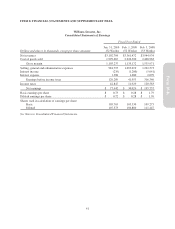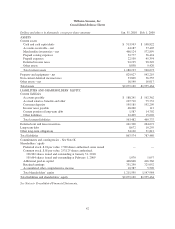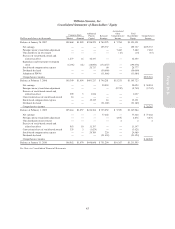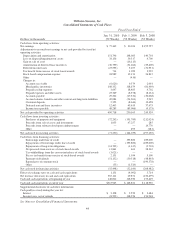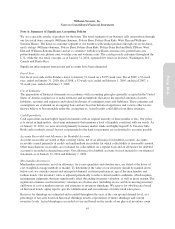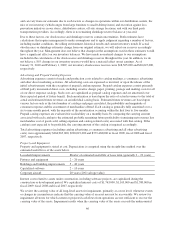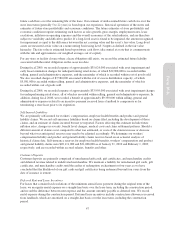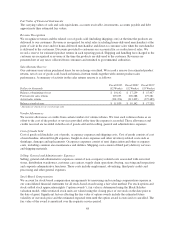Pottery Barn 2009 Annual Report Download - page 50
Download and view the complete annual report
Please find page 50 of the 2009 Pottery Barn annual report below. You can navigate through the pages in the report by either clicking on the pages listed below, or by using the keyword search tool below to find specific information within the annual report.carrying value of the assets. Impairment results when the carrying value of the assets exceeds the undiscounted
future cash flows over the remaining life of the lease. Our estimate of undiscounted future cash flows over the
store lease term (generally 5 to 22 years) is based upon our experience, historical operations of the stores and
estimates of future store profitability and economic conditions. The future estimates of store profitability and
economic conditions require estimating such factors as sales growth, gross margin, employment rates, lease
escalations, inflation on operating expenses and the overall economics of the retail industry and are therefore
subject to variability and difficult to predict. If a long-lived asset is found to be impaired, the amount recognized
for impairment is equal to the difference between the net carrying value and the asset’s fair value. Long-lived
assets are measured at fair value on a nonrecurring basis using Level 3 inputs as defined in the fair value
hierarchy. The fair value is estimated based upon future cash flows (discounted at a rate that is commensurate
with the risk and approximates our weighted average cost of capital). We recorded impairment charges related to
our underperforming retail stores of $28,941,000, $33,995,000 and $1,082,000 in selling, general and
administrative expenses in fiscal 2009, fiscal 2008 and fiscal 2007, respectively.
Self-Insured Liabilities
We are primarily self-insured for workers’ compensation, employee health benefits and product and general
liability claims. We record self-insurance liabilities based on claims filed, including the development of those
claims, and an estimate of claims incurred but not yet reported. Factors affecting this estimate include future
inflation rates, changes in severity, benefit level changes, medical costs and claim settlement patterns. Should a
different amount of claims occur compared to what was estimated, or costs of the claims increase or decrease
beyond what was anticipated, reserves may need to be adjusted accordingly. We determine our workers’
compensation liability and product and general liability claims reserves based on an actuarial analysis of
historical claims data. Self-insurance reserves for employee health benefits, workers’ compensation and product
and general liability claims were $20,111,000 and $21,006,000 as of January 31, 2010 and February 1, 2009,
respectively and are recorded within accrued salaries, benefits and other on our Consolidated Balance Sheets.
Customer Deposits
Customer deposits are primarily comprised of unredeemed gift cards, gift certificates, and merchandise credits
and deferred revenue related to undelivered merchandise. We maintain a liability for unredeemed gift cards, gift
certificates, and merchandise credits until the earlier of redemption, escheatment or four years as we have
concluded that the likelihood of our gift cards and gift certificates being redeemed beyond four years from the
date of issuance is remote.
Revenue Recognition
We recognize revenues and the related cost of goods sold (including shipping costs) at the time the products are
delivered to our customers. Revenue is recognized for retail sales (excluding home-delivered merchandise) at the
point of sale in the store and for home-delivered merchandise and direct-to-customer sales when the merchandise
is delivered to the customers. Discounts provided to customers are accounted for as a reduction of sales. We
record a reserve for estimated product returns in each reporting period. Shipping and handling fees charged to the
customer are recognized as revenue at the time the products are delivered to the customer. Revenues are
presented net of any taxes collected from customers and remitted to governmental authorities.
Sales Return Reserve
Our customers may return purchased items for an exchange or refund. We record a reserve for estimated product
returns, net of cost of goods sold, based on historical return trends together with current product sales
performance. As of January 31, 2010 and February 1, 2009, our reserve for sales returns was $11,839,000 and
$10,142,000, respectively.
Stock-Based Compensation
We measure and record compensation expense in our consolidated financial statements for all stock-based
awards using a fair value method. For stock options and stock-settled stock appreciation rights (“option awards”),
fair value is determined using the Black-Scholes valuation model, while restricted stock units are valued using
38


